-
1 of 253523 objects
Replica of the Warwick Vase signed & dated 1830
Bronze | 159.0 x 253.0 x 185.0 cm (whole object) | RCIN 71434
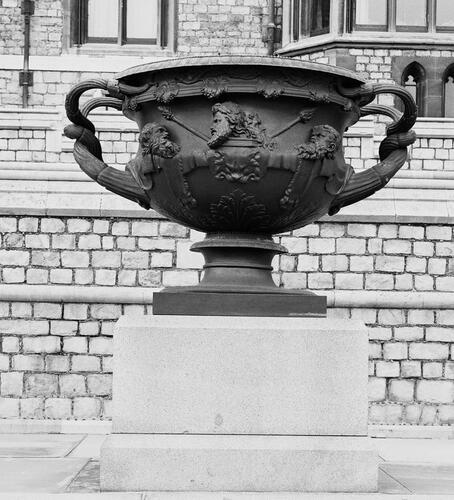
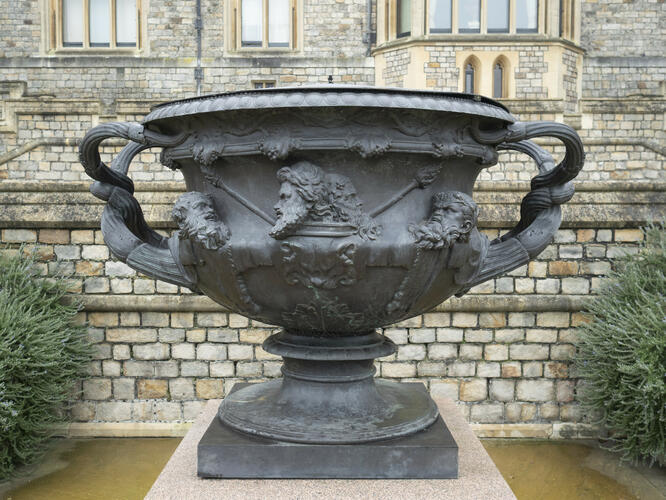
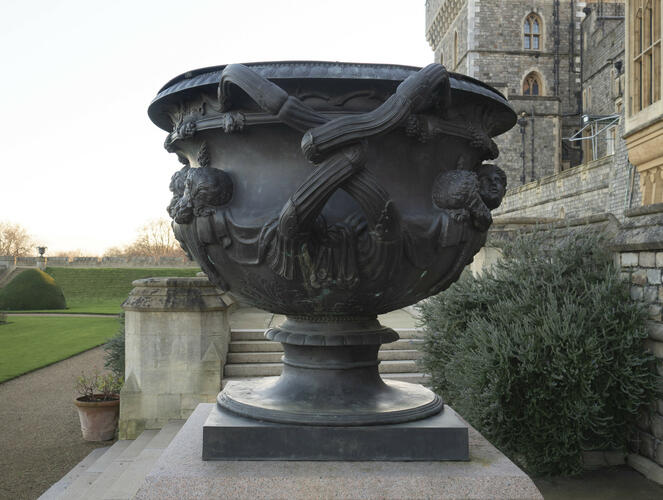
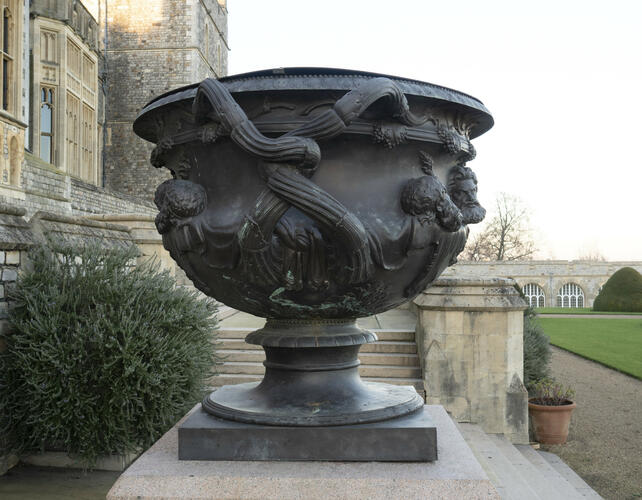
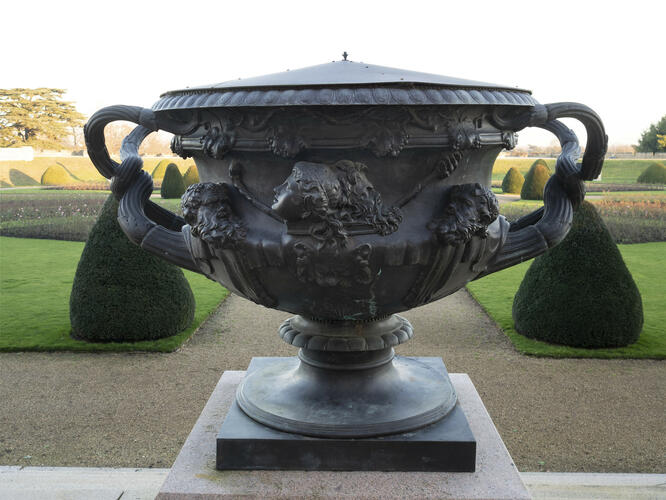
-
A full-size bronze replica of the marble 'Warwick Vase' (Roman, first–second century ad, with eighteenth-century restorations) in the Burrell Collection, Glasgow. The vase has fluted and intertwined handles and the body is decorated with vine leaves and berries, scrolls, and female and male masks in high relief. The base and top rim are beaded and with tongue border. The vase stands on a rectangular speckled granite base with chamfered corners and moulded base. Cast inscription on the top rim: C. CROZATIER. PARIS. 1830.
The colossal vase with Bacchic ornamentation known as the ‘Warwick’ vase was discovered in 1771 in many fragments in the course of an excavation of a lake near Hadrian’s Villa at Tivoli, organised by the painter and antiquary Gavin Hamilton (1723–98). The fragments were acquired by his namesake, Sir William Hamilton (1730–1803) and assembled, probably under the supervision of Giovanni Battista Piranesi, who published it in entire form in his set of engravings. Hamilton offered the vase to the British Museum but it was rejected owing to concerns about the extent of restoration. Instead it was sold to Hamilton’s nephew George Greville, 2nd Earl of Warwick (1746–1816), who had a conservatory constructed at Warwick Castle for its display. Thanks to the popularity of Piranesi’s engravings and accounts of visitors to Warwick Castle, the vase quickly became famous. Howeve, the earl resisted applications to have it copied until 1813, when a request was received from the 3rd Earl of Lonsdale (1787– 1872). Lord Warwick insisted that the copy should be made in silver, to which Lord Lonsdale agreed. The royal goldsmiths, Rundell, Bridge and Rundell, of whom Lonsdale was also an important client, set to work on the creation of a full-size wax model from moulds of the marble vase. This work was undertaken by William Theed I with a large team of assistants. The submission of an estimate for the cost of the silver vase, £30,000, seems not to have perturbed Lonsdale but he eventually abandoned his order because Rundells insisted on a contingency sum which might run to an additional £5,000.
Rundells now sent their moulds to Charles Crozatier in Paris with the intention of having two full-size bronze replicas cast. The first of these, RCIN 71434, was purchased by George IV. The other remained unsold for a period of time before the 3rd Duke of Northumberland was persuaded to acquire it as a gift for Cambridge University, of which he was chancellor. It was presented in 1842 and stands outside the Senate House in Cambridge. George IV’s admiration for the vase is confirmed not only by his acquisition of a second, half-size, bronze copy (RCIN 71431) but also of two sets of four silver-gilt ice-pails (25.5 cm and 26.5 cm high) supplied by Rundells from 1812.
From the time of its arrival at Windsor it seems to have been positioned on the steps leading to the East Terrace Garden, in the position that Sir Charles Long had first envisaged for the Waterloo Vase (RCIN 68600), but on a lower level.
Text adapted from Sculpture in the Collection of His Majesty The King (2025)Provenance
Purchased by George IV from Messrs Rundell, Bridge & Rundell c.1822 at a cost of £1470 (Royal Archives, Georgian Papers 22907). The vase also appeared in a list of work in hand at Rundell, Bridge & Rundell with an estimate of £1500 (Royal Archives, Georgian Papers 26251).
-
Creator(s)
(founder (metals))(retailer)Acquirer(s)
-
Medium and techniques
Bronze
Measurements
159.0 x 253.0 x 185.0 cm (whole object)
Category
Object type(s)
Place of Production
Paris [Île-de-France]